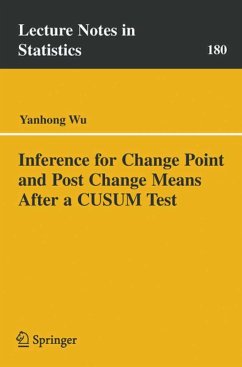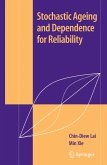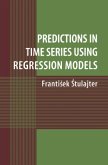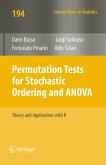The change-point problem has attracted many statistical researchers and practitioners during the last few decades. Here, we only concentrate on the sequential change-point problem. Starting from the Shewhart chart with app- cations to quality control [see Shewhart (1931)], several monitoring procedures have been developed for a quick detection of change. The three most studied monitoring procedures are the CUSUM procedure [Page (1954)], the EWMA procedure [Roberts (1959)] and the Shiryayev?Roberts procedure [Shiryayev (1963) and Roberts (1966)]. Extensive studies have been conducted on the p- formancesofthesemonitoringproceduresandcomparisonsintermsofthedelay detection time. Lai (1995) made a review on the state of the art on these charts and proposed several possible generalizations in order to detect a change in the case of the unknown post-change parameter case. In particular, a wind- limited version of the generalized likelihood ratio testing procedure studied by Siegmund andVenkatraman (1993) is proposed for a more practical treatment even when the observations are correlated. In this work, our main emphasis is on the inference problem for the chan- point and the post-change parameters after a signal of change is made. More speci?cally, due to its convenient form and statistical properties, most d- cussions are concentrated on the CUSUM procedure. Our goal is to provide some quantitative evaluations on the statistical properties of estimators for the change-point and the post-change parameters.
From the reviews:
"Overall, I recommend the book to anyone working in the area of sequential analysis." Journal of the American Statistical Association, June 2006
"The goal of the author is to provide some quantitative evaluations on the statistical properties of estimators for change-point and post-change parameters after a signal of change is made. Most discussions are concentrated on the CUSUM procedure. ... The presentation is formal, all results are presented with proofs. Additionally, several case studies are included." (R. Schlittgen, Zentralblatt MATH, Vol. 1067, 2005)
"This monograph is the first to systematically study the bias of estimators and the construction of corrected confidence intervals for change-point and post-change parameters after a change is detected by using a CUSUM procedure. ... Practitioners who are interested in applications to quality control, dynamical systems, financial markets, clinical trials and other areas will benefit ... . Readers with an elementary probability and statistics background and some knowledge of CUSUM procedures will be able to understand most results, as the material is relatively self-contained." (Lian Fen Qian, Mathematical Reviews, 2006 i)
"Overall, I recommend the book to anyone working in the area of sequential analysis." Journal of the American Statistical Association, June 2006
"The goal of the author is to provide some quantitative evaluations on the statistical properties of estimators for change-point and post-change parameters after a signal of change is made. Most discussions are concentrated on the CUSUM procedure. ... The presentation is formal, all results are presented with proofs. Additionally, several case studies are included." (R. Schlittgen, Zentralblatt MATH, Vol. 1067, 2005)
"This monograph is the first to systematically study the bias of estimators and the construction of corrected confidence intervals for change-point and post-change parameters after a change is detected by using a CUSUM procedure. ... Practitioners who are interested in applications to quality control, dynamical systems, financial markets, clinical trials and other areas will benefit ... . Readers with an elementary probability and statistics background and some knowledge of CUSUM procedures will be able to understand most results, as the material is relatively self-contained." (Lian Fen Qian, Mathematical Reviews, 2006 i)








